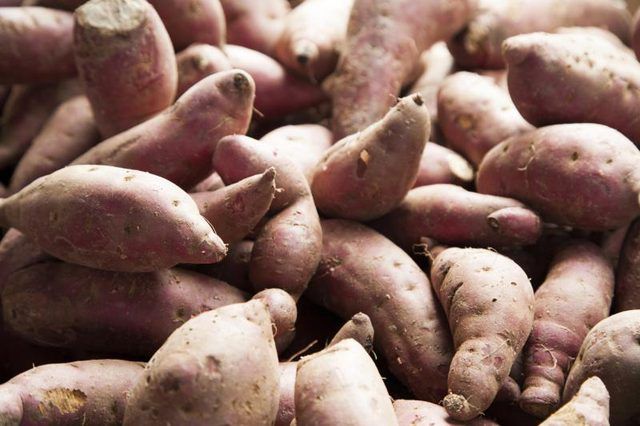Bulbs
Flower Basics
Flower Beds & Specialty Gardens
Flower Garden
Garden Furniture
Garden Gnomes
Garden Seeds
Garden Sheds
Garden Statues
Garden Tools & Supplies
Gardening Basics
Green & Organic
Groundcovers & Vines
Growing Annuals
Growing Basil
Growing Beans
Growing Berries
Growing Blueberries
Growing Cactus
Growing Corn
Growing Cotton
Growing Edibles
Growing Flowers
Growing Garlic
Growing Grapes
Growing Grass
Growing Herbs
Growing Jasmine
Growing Mint
Growing Mushrooms
Orchids
Growing Peanuts
Growing Perennials
Growing Plants
Growing Rosemary
Growing Roses
Growing Strawberries
Growing Sunflowers
Growing Thyme
Growing Tomatoes
Growing Tulips
Growing Vegetables
Herb Basics
Herb Garden
Indoor Growing
Landscaping Basics
Landscaping Patios
Landscaping Plants
Landscaping Shrubs
Landscaping Trees
Landscaping Walks & Pathways
Lawn Basics
Lawn Maintenance
Lawn Mowers
Lawn Ornaments
Lawn Planting
Lawn Tools
Outdoor Growing
Overall Landscape Planning
Pests, Weeds & Problems
Plant Basics
Rock Garden
Rose Garden
Shrubs
Soil
Specialty Gardens
Trees
Vegetable Garden
Yard Maintenance
How to Grow Yams
How to Grow Yams. In the United States, yam refers to the moist, orange-fleshed variety of sweet potato (Ipomoea batatas), rather than a member of the family of true yams, Dioscoreaceae. Sweet potatoes are a warm-season vining crop that is both heat-tolerant and disease-resistant. Grown throughout tropical and temperate regions, hardy in U.S....

In the United States, yam refers to the moist, orange-fleshed variety of sweet potato (Ipomoea batatas), rather than a member of the family of true yams, Dioscoreaceae. Sweet potatoes are a warm-season vining crop that is both heat-tolerant and disease-resistant. Grown throughout tropical and temperate regions, hardy in U.S. Department of Agriculture plant hardiness zones 9 to 11, though usually grown as an annual, the sweet potato has a long growing season and when harvested will store well for up to a year.
Planting
Sweet potatoes develop from slips, or sprouts, that are grown from the previous sweet potato harvest, or are available through seed catalogues and garden centers. Before planting the slips, amend the soil with plenty of compost. Sweet potatoes will grow in most soils, but the best harvest will occur in a loamy, well-drained environment. Plant the slips in full sun, 12 to 18 inches apart after the risk of frost for your area has passed; sweet potatoes are very cold-sensitive. When planting, place the slip deep enough to cover the roots and part of the stem. Water the sprouts immediately after planting and continue to water regularly for a few days to encourage strong root development.
Growing
Sweet potatoes will adapt to most soil conditions, and survive short periods of drought, but they need heat to grow. For healthy growth, the soil temperature should be between 70 to 100 degrees Fahrenheit, 90 to 100 degrees F being optimal. Temperatures ranging from 50 to 70 degrees F will cause the sweet potato tubers to suffer from chilling injury, resulting in stunted growth. With the yam's long, 105-day growing season, the soil needs help to warm up in cooler climates. Covering the rows with clear plastic, providing a greenhouse effect and heating up the soil, will assist in producing strong tuber growth. Side-dress the rows four weeks after planting with a 5-10-10 fertilizer. Do not use high-nitrogen fertilizers on sweet potatoes; the added nitrogen will produce outstanding vines, but weak tubers. Never prune the sweet potato vines; they should be full and vigorous.
Harvesting
You can begin to harvest your sweet potatoes any time after the leaves turn yellow, however, leaving the tubers in the ground as long as possible before the frost arrives will provide a higher yield. Use a garden fork when digging up sweet potatoes. They can spread up to a foot underground and using a shovel or spade risks damaging the tubers. Sweet potatoes need to cure before being eaten or stored and should never be refrigerated. To cure, collect the tubers and keep them in a well-ventilated area for up to 15 days at a temperature of 85 to 90 degrees F. During this time, the potato grows a second skin, which allows for its long storage period and for the flavor to develop; uncured sweet potatoes are tasteless. Once cured, store in a location with a humidity level of 75 to 80 percent at 55 degrees F.
Varieties to Consider
"Golden Jewel" has a deep orange color, stores well and keeps its flavor. For a high level of disease resistance and long storage, consider "Jewel." "Bunch Porto Rico," with a rich copper color, is a suitable choice for small-space gardeners. For gardeners that prefer heirloom varieties, "Ringley’s Porto Rico" produces an apricot-colored flesh surrounded by a light tan skin.